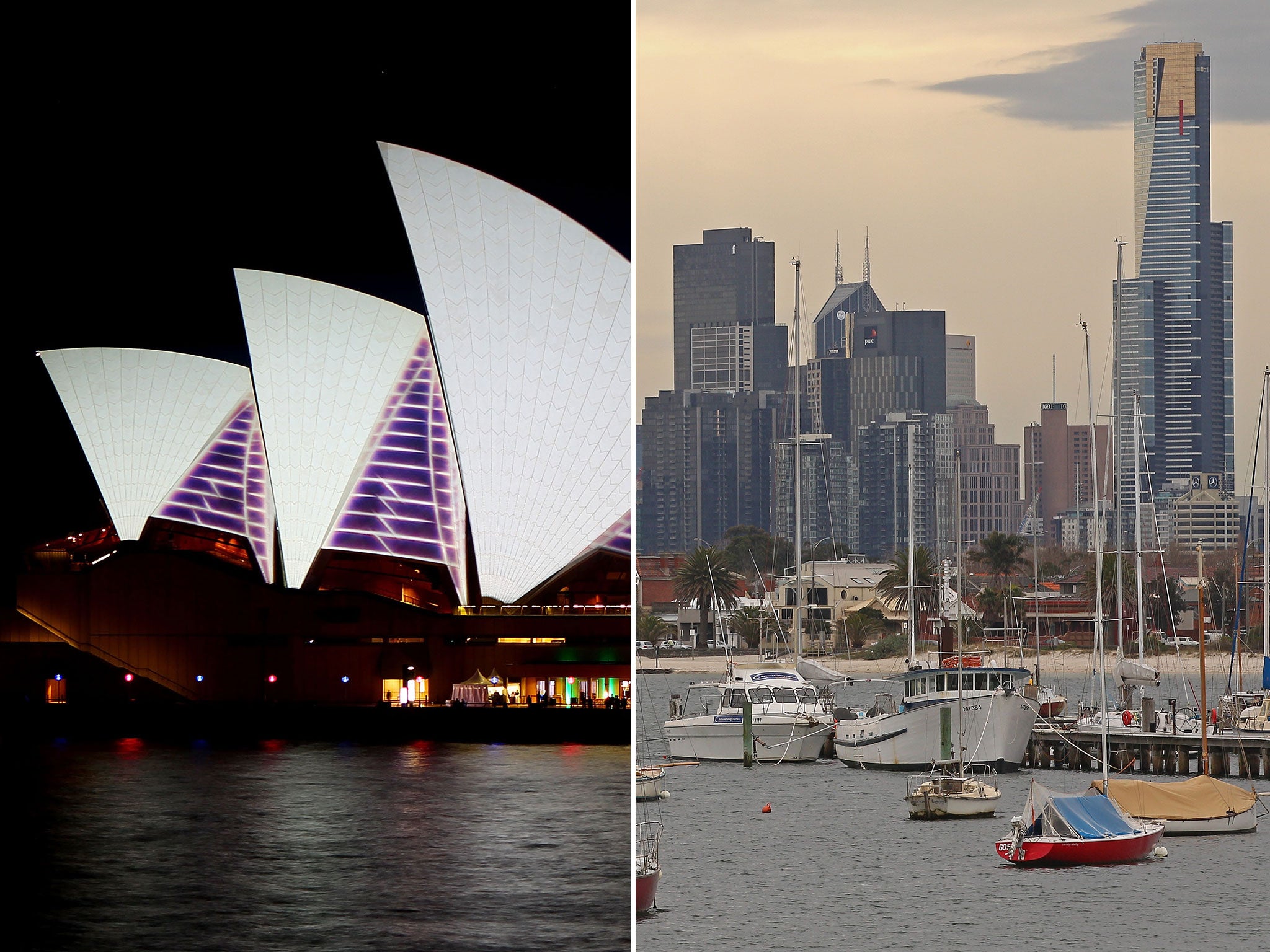Cultural relations between Sydney and Melbourne soured by row over milk crate art instillation
Artist Hany Armanious's 'Pavilion' won an international contest to create new public artworks for Sydney city centre - but Melbourne-based artist Jarrad Kennedy claims it 'is in breach of copyright'

Your support helps us to tell the story
From reproductive rights to climate change to Big Tech, The Independent is on the ground when the story is developing. Whether it's investigating the financials of Elon Musk's pro-Trump PAC or producing our latest documentary, 'The A Word', which shines a light on the American women fighting for reproductive rights, we know how important it is to parse out the facts from the messaging.
At such a critical moment in US history, we need reporters on the ground. Your donation allows us to keep sending journalists to speak to both sides of the story.
The Independent is trusted by Americans across the entire political spectrum. And unlike many other quality news outlets, we choose not to lock Americans out of our reporting and analysis with paywalls. We believe quality journalism should be available to everyone, paid for by those who can afford it.
Your support makes all the difference.Australia’s two biggest cities, Sydney and Melbourne, have long vied to be recognised as the nation’s cultural capital.
It’s a fair bet, though, that no one expected a row about rival milk crates. Giant milk crates, that is. Works of art.
Hany Armanious is an Egyptian-born, Sydney-based artist who – together with Britain’s Tracy Emin and a Japanese artist, Junya Ishigami – won an international contest to create new public artworks for Sydney city centre.
Mr Armanious proposed a 13.7-metre fibreglass milk crate, and judges of the competition – which attracted nearly 700 entries from 25 countries – loved the idea. This week, the city council announced that the piece, costing £1.38m and entitled Pavilion, will adorn Belmore Park, near Sydney’s main Central railway station.
Amid the predictable cries of “that’s not art!” and “what a waste of taxpayer money!” came one less-predictable response: from Melbourne-based artist Jarrad Kennedy, who was alerted to Mr Armanious’s work by friends in Sydney.
Studying an artist’s impression of Pavilion, Mr Kennedy experienced a sense of deja vu. In 2005, he entered a piece for an Australian sculpture award. The piece was a milk crate, entitled Cube and made from recycled timber. It didn’t win the award, and in 2009 it was destroyed by the bushfires which raged through Victoria on “Black Saturday”.
Mr Kennedy was “shocked, to say the least” by Pavilion, he wrote on his Facebook page, where he displayed pictures of the two crates, side by side. No matter that they were created from different materials and were different colours (Mr Armanious’s dark blue, Mr Kennedy’s reddish/brown) and even different sizes – Mr Kennedy’s was a three-metre cube.
On the contrary, “the fact the crate has been ‘scaled up’ is cause for concern”, he wrote, adding: “Art may be open to interpretation, but precedents dictate that [this] artwork is in breach of copyright.”
Mr Kennedy said he would be contacting Mr Armanious, who has had work exhibited at the Venice Biennale, and would also seek legal advice.
Today the council responded to his plagiarism claims, with its curatorial adviser on city centre art, Barbara Flynn, stating that city officials were confident that Armanious’s piece was “an original artwork consistent with his practice of artistic excellence”. In a statement to the Sydney Morning Herald, Ms Flynn said the artist “has assured us he was unaware of the existence of this particular Melbourne artwork”.
That didn’t stop the media going to town on what the tabloid Daily Telegraph dubbed the “battle of the crates”.
The piece got a thumbs-up from the director of Sydney’s Museum of Contemporary Art, Elizabeth Ann MacGregor, who predicted it would become “hugely popular”. Others were less convinced.
Critics also turned a merciless eye on the other artworks: Ms Emin’s sculpture of 60 bronze birds, entitled The Distance of Your Heart and costing A$2.1m (£1.1m), and Mr Ishigami’s work, the A$3.5m Cloud Arch, a 75-metre-tall undulating, white arch to be installed outside Sydney Town Hall.
All three – expected to be in place by 2017 – were lampooned on social-media sites, prompting Sydney’s Lord Mayor, Clover Moore, to tweet: “Public art is meant to spark debate. Terrific Sydney is talking public art today.”
In a radio interview, she insisted: “Great art around the world can really put a city on the map. You only have to think of the Eiffel Tower in Paris.”
Ms Moore said she expected that Cloud Arch, in particular, would become a landmark.
“People know the Sydney Opera House, they know the Harbour Bridge, and in the future they’ll know the Cloud,” she said.
Tim Williams, chief executive of the Committee for Sydney, an independent think-tank, is another fan. He told the Telegraph: “10 years from now we’ll have people marrying by the crate; they’ll be making love under the arch.”
Join our commenting forum
Join thought-provoking conversations, follow other Independent readers and see their replies
Comments